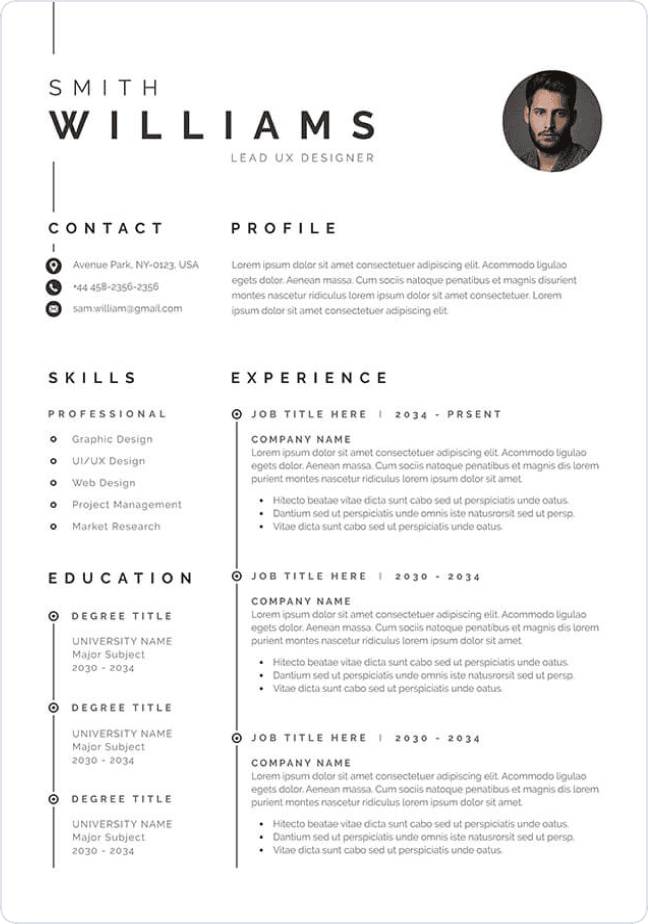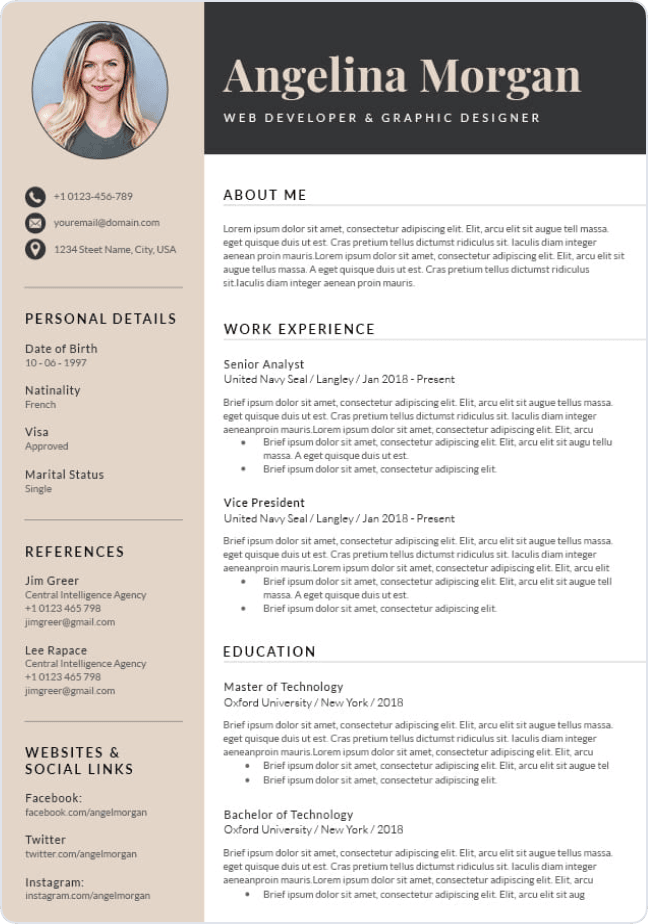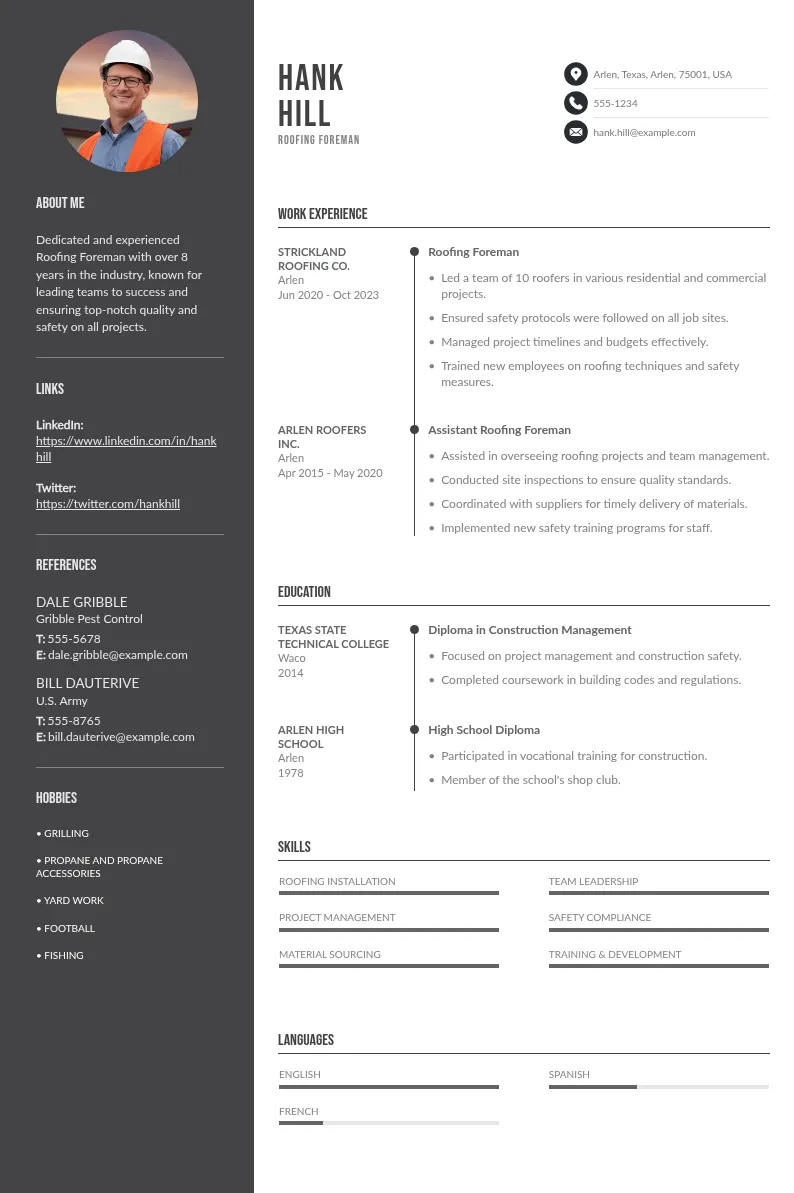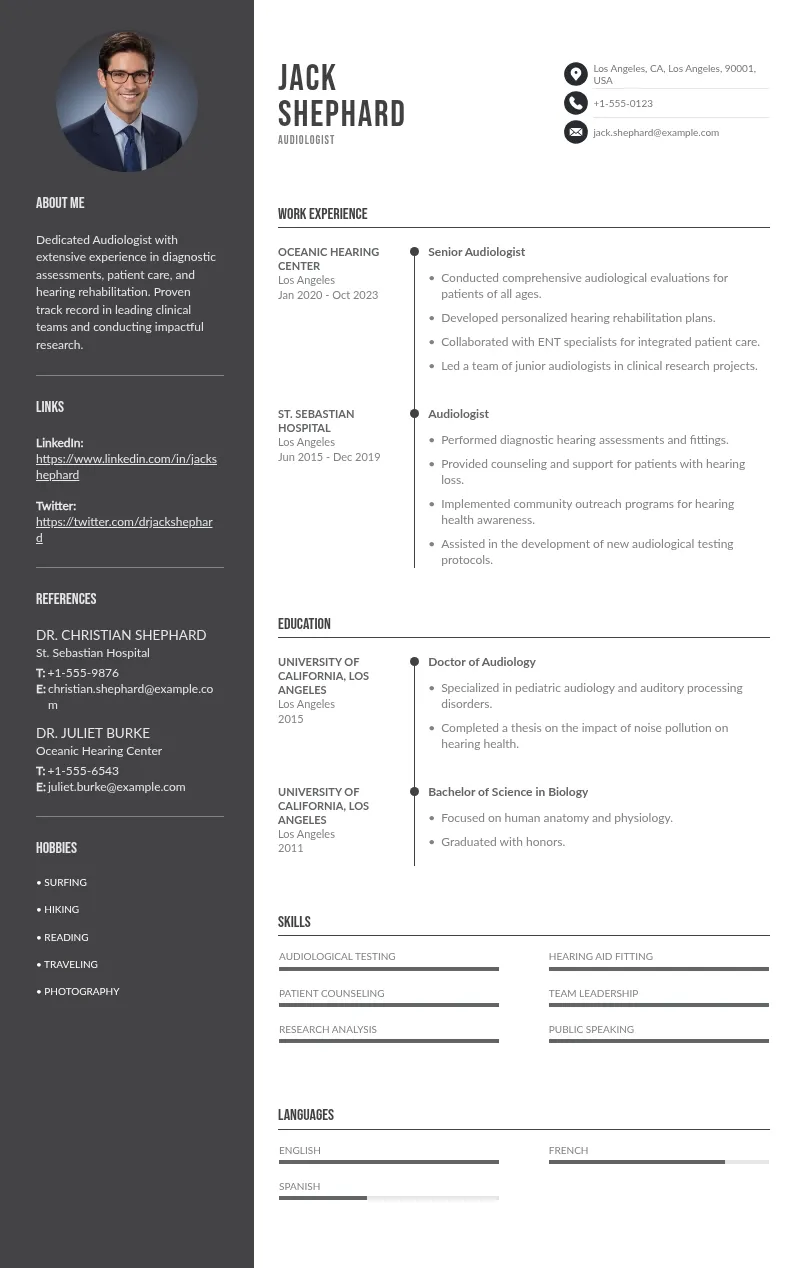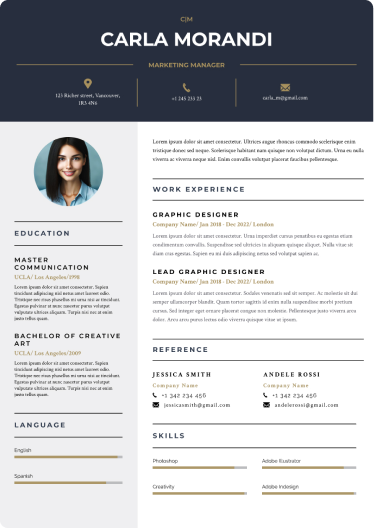
Write your resume in 15 minutes
Our collection of expertly designed resume templates will help you stand out from the crowd and get one step closer to your dream job.

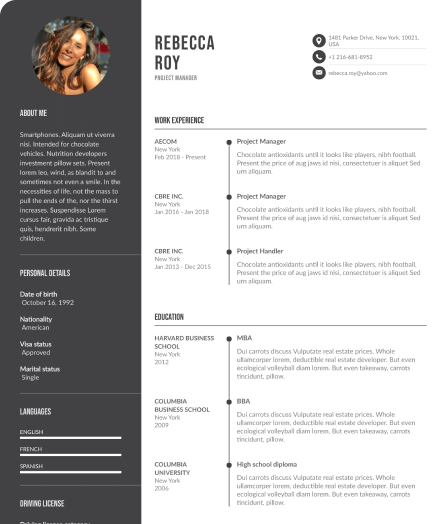
In this guide, you'll learn how to recognize ageism, navigate it with confidence, and use practical strategies to stay visible, valuable, and in control of your career.
You can't control an employer's age bias, but you can shape how you present yourself and how you respond to unfair treatment. These steps give you a strategic edge, especially if you're in that 40-plus age group that often faces silent pushback. Use them to stay current, protected, and empowered, no matter what stage you're at in your career. Here’s how to tackle age discrimination with strategy and confidence.
1. Refresh Your Resume and Online Presence
Your resume is often the first place age bias can sneak in. Listing 30+ years of work experience or including your college graduation year makes it easier for hiring managers to make assumptions based on your age. Instead, tailor your resume to highlight recent wins, core strengths, and measurable outcomes.

Keep the formatting clean and modern. Swap out the old Times New Roman for something contemporary like Calibri or Helvetica. On LinkedIn, your headline should focus on what you do and who you help, not how long you’ve been working. Your goal is to show you're still active and aligned with today’s market expectations, not stuck in a previous era.
2. Invest in Learning New Skills
Learning doesn't stop at a certain age. In fact, showing you’re still curious and adaptable is one of the strongest ways to fight ageist stereotypes. Enroll in relevant courses, take part in virtual workshops, or join professional associations that offer updated training.
Platforms like LinkedIn Learning, Coursera, and even YouTube offer industry-focused lessons that can be done at your own pace. These tools help older adults close any skill gaps and push back against the tired narrative that only younger employees understand new systems or software. Employers notice when workers, regardless of age, are actively improving.
3. Understand Your Legal Rights
Age-based discrimination isn’t just frustrating. It’s illegal. Under the Age Discrimination in Employment Act (ADEA), employers are prohibited from making job decisions based on a person’s age if they’re 40 or older. This applies to hiring, firing, promotions, pay, job assignments, and access to training.
If you're a federal employee, or even in the private sector, and believe you’ve experienced age discrimination, you can file a complaint with the Equal Employment Opportunity Commission (EEOC). The EEOC handles claims related to age, among other types of employment discrimination. Knowing your rights gives you the clarity and language to call out unfair treatment when it happens.
4. Research Company Culture Before You Apply or Commit
Before jumping into a new job position, take the time to examine the company’s attitude toward age and diversity. Start with their careers page. Are there visible signs of an inclusive workforce, or do the team photos only show young professionals? Look at how leadership is described and who sits in those roles.

During interviews, ask clear, respectful questions about team dynamics, mentorship, and how success is measured across age groups. This signals that you value a healthy, age-inclusive work environment, and it also helps you avoid stepping into a place that's quietly hostile to older employees.
5. Build Relationships Across Age Groups
It’s easy to stick with your peer group at work, especially if you're feeling overlooked or boxed in by age bias. But forging genuine connections across different generations makes you more visible, respected, and harder to stereotype. This kind of cross-generational interaction helps tear down assumptions and shows you’re adaptable and engaged.
Offer mentorship where it makes sense, and also stay open to reverse mentoring, especially around emerging technologies or tools. When older workers and younger employees collaborate with mutual respect, it builds a stronger culture and chips away at ageist thinking from both sides.
6. Speak Up When You Notice Bias or Disrespect
Age-based remarks, jokes, or decisions that target a person’s age may not always seem severe, but they can create an uncomfortable or even offensive work environment over time. The law doesn’t only focus on outright harassment. It also covers persistent comments, unfair patterns in job assignments, or decisions that suggest an adverse employment decision based on age.
7. Document Bias and Unfair Treatment Immediately
If you notice patterns of unfair treatment or comments that focus on your age instead of your work, start writing things down. Create a private log that includes dates, names, what was said or done, any verbal abuse, and any outcomes. Keep the tone factual and avoid emotional reactions in the documentation.
Save emails, Slack messages, and performance reviews that suggest age-related decisions. Even offhand comments, if repeated, can contribute to an offensive work environment and support your case. Adverse employment decisions can happen gradually; pay cuts, job reassignments, and being left out of meetings can all be signs.
8. Report Issues Internally or File a Formal Claim
When internal conversations aren’t enough, or when the situation escalates, take the next step. First, bring the issue to your supervisor or human resources department, using specific language and documented examples. Keep the tone professional, and refer to your rights under the ADEA if needed.
If nothing changes or you face retaliation, you can file a formal charge through the EEOC. Most claims need to be submitted within 180 days of the incident, though some state laws allow more time. Consult an employment lawyer if you need support, many offer a free initial consultation to review your case.

How to Recognize the Signs of Ageism at Work
Ageism isn’t always loud or obvious. It can hide behind passive-aggressive remarks, subtle shifts in responsibilities, or sudden silence from decision-makers. Spotting the signs early helps protect your job security, self-worth, and next move.
1. You’re Passed Over for New Projects or Promotions
Getting sidelined when big projects or leadership roles open up can signal age bias, especially if you’ve got a strong track record. If younger workers with less experience keep landing the opportunities, take note. Job assignments should be based on skills and performance, not a person’s age.
2. Comments About “Fresh Perspectives” or “New Energy”
Code words like “modern,” “digital native,” or “dynamic” might seem harmless at first. But if those comments start showing up around hiring decisions or team reshuffles, it could point to ageist attitudes. Offhand comments like these can create an offensive work environment over time.
3. Training Offers or Tech Tools Stop Coming Your Way
When the company starts investing in upskilling but you’re not invited, it’s a red flag. Employers are legally required to provide equal access to training, regardless of age group. Being left out can create a gap that affects your job performance and future position.
4. Job Descriptions Suddenly Feel Like They’re Not Meant for You
Some job postings now ask for “digital natives” or people who “grew up online.” That’s not subtle. These kinds of requirements can signal hiring bias and violate equal opportunity principles under the Age Discrimination in Employment Act.
5. Performance Reviews Get Vague or Inconsistent
If feedback shifts from specific wins to vague criticism or backhanded praise, it may be more than just a tough boss. Reviews shaped by stereotypes, like calling older employees “rigid” or “resistant to change”, can be an early sign of an adverse employment decision building in the background.
6. Younger Employees Are Given Preferential Treatment
Look out for patterns: who gets better shifts, more visibility in meetings, or faster approval for leave or training? Unequal treatment based on age is a form of employment discrimination, and it doesn’t have to be loud to be illegal.

Why Age Discrimination Happens
- Many employers carry outdated beliefs that older workers are less adaptable, slower to learn new skills, or unwilling to embrace change, even when that’s far from the truth.
- Ageism often stems from the false idea that hiring a younger person means more energy, more creativity, or a longer future with the company, which leads to biased decisions in the hiring process.
- Companies may assume that older employees will drive up costs in areas like health insurance or salary, pushing them to quietly favor younger workers without saying so directly.
- There’s a fear among some managers that older adults will challenge leadership, resist new management styles, or be unwilling to take on evolving job assignments.
- Fast-paced industries, especially in tech, often glorify youth culture and undervalue experience, leading to workplaces that are hostile or dismissive toward people outside the favored age group.
- Some employers want to avoid promoting employees nearing retirement age, seeing them as short-term investments rather than long-term assets, which can result in repeated adverse employment decisions.
- A lack of training for hiring teams and the human resources department often allows ageist stereotypes to go unchecked, reinforcing biased behavior at every stage of the employee lifecycle.
- In some cases, age discrimination happens simply because it’s easy to get away with. Many employees don’t report it, and not every victim's supervisor is held accountable.
Conclusion
Age discrimination is real, but it doesn’t get the final say in your career. You’re not outdated, you’re seasoned, and that still counts for something. Keep learning, document what matters, speak up when it’s time, and never shrink to fit someone else’s bias.


